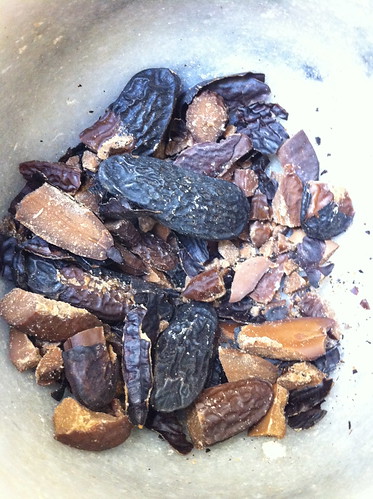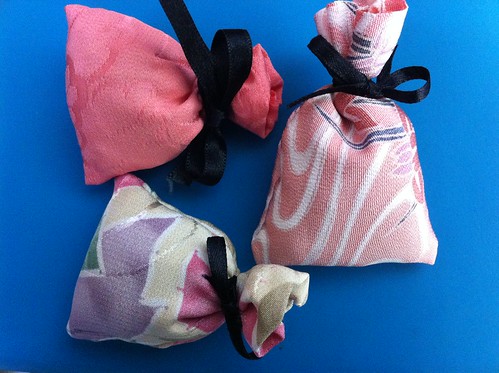Hanami Sachets
They are hand-stitched (I still need to sew a few more), so very labour intense - a labour of love, if you will. But that's not the true reason for my procrastination. I just did not know what to fill them with!
The solution was partly serendipity, and partly luck. On my last day in Berkeley, I visited Yuko Fukami. She generously gifted me with high-quality Japanese herbs, spices and resins that she in turn received from our mutual friend Ross Urrere. In true Japanese fashion, she beautifully wrapped them with wax-paper, similar to how a TCM (Traditional Chinese Medicine) doctor packages his custom-dosed powdered "herbs" (for all I know, these can range from true herbs and plant matter to minerals and crushed sea-horses, tiger bones, dragon's tails and other mythical creatures body parts).

Upon my return to Vancouver, I immediately set to mix together these glorious components, as well as some of my own stashed-away botanicals: dried ume (Japanese sour plum) blossoms, whole tonka beans, and others that for now will remain secret. Crushing the tonka beans with a marble set of mortar-and-pestle was a truly sensual experience. Although there is mostly coumarin in tonka, there is also something else that is nutty and spectacular that you just don't get from the isolate/synthetic molecule alone. I love it! French chefs grate it on microplane and add to chocolate desserts (ganaches, macarons, ice-creams...). In North America it is illegal to use it due to carcinogenic effects. Personally, I think that we are exposed to far more dangerous carcinogens in daily life (your seemingly innocent ink on your grocery receipts has a plastic that is highly carcinogenic, as are most cans used to preserve foods). So I don't feel bad at all making myself a tonka-dessert once in a blue moon.

The sachets were supposed to be a studio-exclusive for my Hanami tea party. Unfortunately, we had to cancel it and will host it either in early May, or next year... So you can now get them online on my virtual boutique. These are very limited edition - I only have enough fabrics and filling for 12 sachets.
The Japanese used incense and sachets just like that to scent their kimonos and stationary so that they will be recognized for their good taste by their lovers (or suiters)... Use these sachets to scent your lingerie drawer, linen closet or stationary. You can also throw it in your suitcase when traveling, or tuck into a wool sweater or jacket's pocket for a lingering scent and to keep moths at bay.



